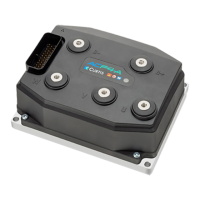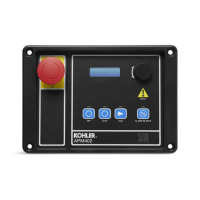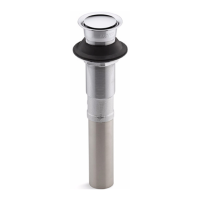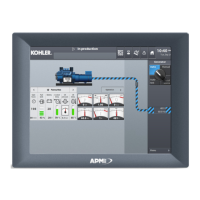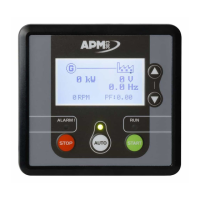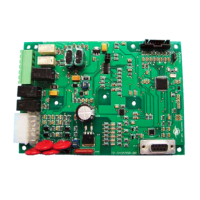6 — COMMISSIONING
pg. 167
Return to TOC Curtis AC F2-A, F4-A, F6-A Motor Controllers – FOS 4.5 – April 2022
Quick Links:
rottle Source p.120
Inputs p.103
rottle Setup
Fig. 35 p.164
8.3 Controls. is menu sets which input source is used for the listed items. Based upon the
application’s wiring, assign each of the menu’s parameters to a specic switch. e rottle,
Brake, and Steer sources are analog inputs. Set the input type (i.e., either a switch or an “analog”
voltage) for the Li, Li Limit Switch, and the Lower Input that matches the application. Refer
to Figures 12 & 13 as a guide.
rottle Source = 1 *
Brake Source = 0 (not used in Fig. 12, 14, & 15) *
See Programmer » Controller Setup »IO Assignments » Controls
Step 9. Inputs
Congure the Inputs menu. Analog1 default setting is as a 3-wire potentiometer. e other analog
inputs are available for general usage, although as illustrated in the wiring diagrams, Analog 2 is the
motor temperature sensor, and Analog 3 and 4 are the encoder signal inputs. As such, Analog 2, 3, and
4 do not need to be congured in this menu because their assignments are the default when the motor
temperature sensor is enabled and the motor Position Sensor Type is assigned.
If a voltage-based throttle is used, set it now. If a potentiometer-based throttle is used, set it now as either
a 3-wire or 2-wire. If a VCL throttle is employed, the Analog 1 Type parameter is ignored as a throttle,
freeing this input to function as assigned. For example, the input can be assigned as a brake input, which
would necessitate the Brake Source in Step 10 being set = 1 (for Analog 1). Figure 13 shows Analog 18
as a 2-wire potentiometer for the brake throttle. Yet, it could as easily be a voltage-type input, or via the
CANbus and processed in VCL, as shown in Figure 15, the CANbus Tiller-Head example.
See Programmer » Controller Setup » Inputs
Traction Throttle Setup
e controller accepts Class III tiller handles with ipper and/or twist-grip throttles whether with
forward and reverse switches or those of the wigwag type (symmetrical throttle response in both the
forward and reverse directions, yet without directional switches). From Curtis, the ET-126 throttle
assembly oers a symmetrical 0–5V Hall-eect throttle featuring a wigwag type throttle-return-to-
neutral, and solid-state forward and reverse switches. Alternatively, when implementing a traditional
foot throttle, Curtis oers both 3-wire potentiometer and Hall-eect voltage throttles—as complete
pedal-assemblies, which easily integrate into vehicles.
The throttle setup depends upon the type used. Possible types include voltage, 3-wire or 2-wire
potentiometers, and those received over the CANbus and processed using VCL. e controller also accepts
PWM (signal output) position sensor type throttles. See each of the representative setup examples below.
In all cases, the throttle command is as a percentage (%) and not voltage. e voltage at an input will
change due to the dynamic checks at the input which verify the integrity of the input signal. is is new
to the FOS-series controllers and diers from the E/SE-series controllers (that display a “steady” voltage).
All throttle setups use the Curtis Integrated Toolkit
TM
to assign/set the throttle parameters. Figure
35 illustrates the Programmer’s throttle-related parameters.
Before setting up the throttle parameters, turn the Interlock O. is will prevent accidental motor
operation. e Interlock was “assigned” to a switch (digital) input in the wiring diagrams. Read the
Interlock Input Source parameter (value displayed) and then the indicated switch for its On/O status
in the Programmer » Controller Setup » IO Assignments » Switch Assignment menu and then the Switch
Status menu (or use the Programmer » System Monitor » Inputs » Switch Status menu). If the Programmer
indicates the interlock is On, review how the Interlock Type parameter is set and turn the interlock O.
* If the analog input is set to zero, the input is by VCL and the associated analog input is ignored.

